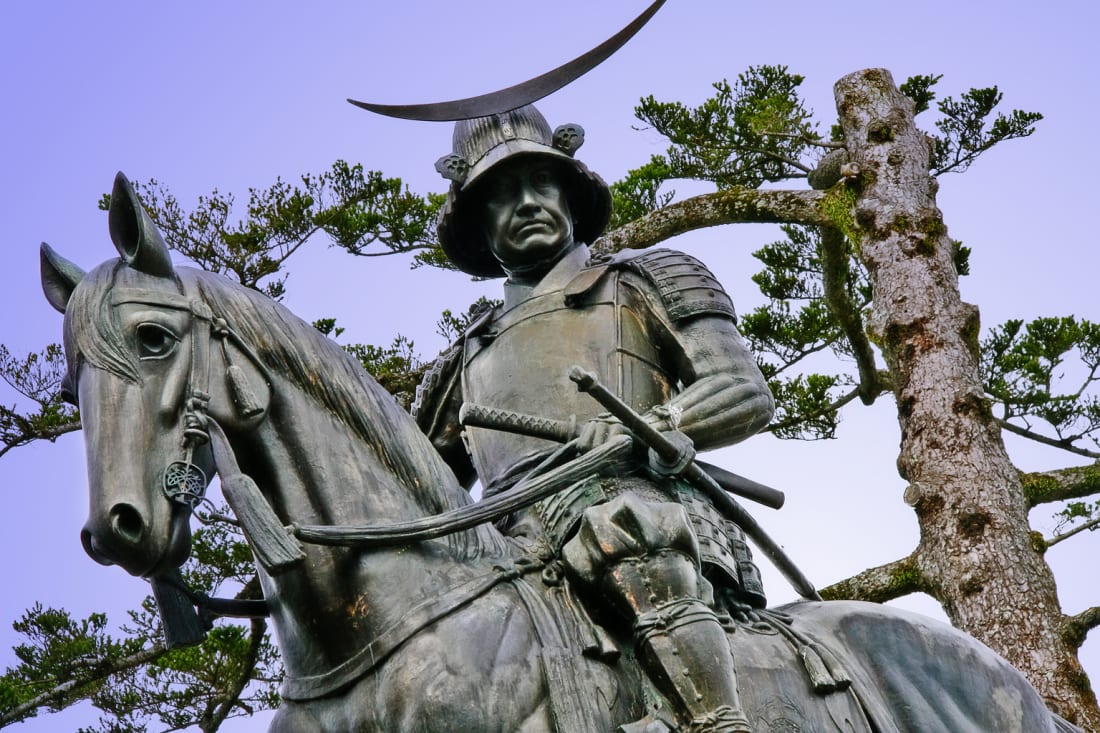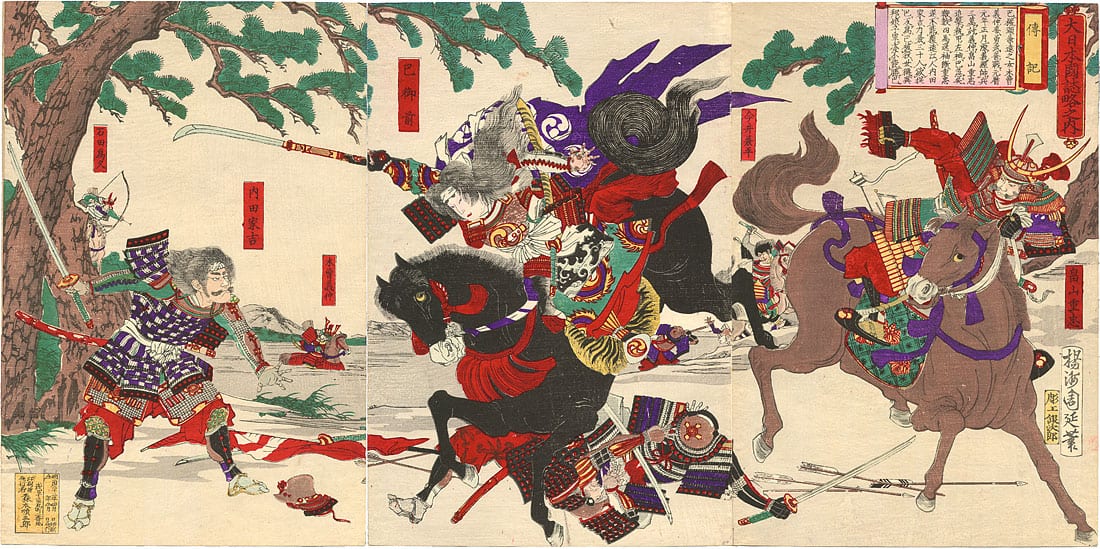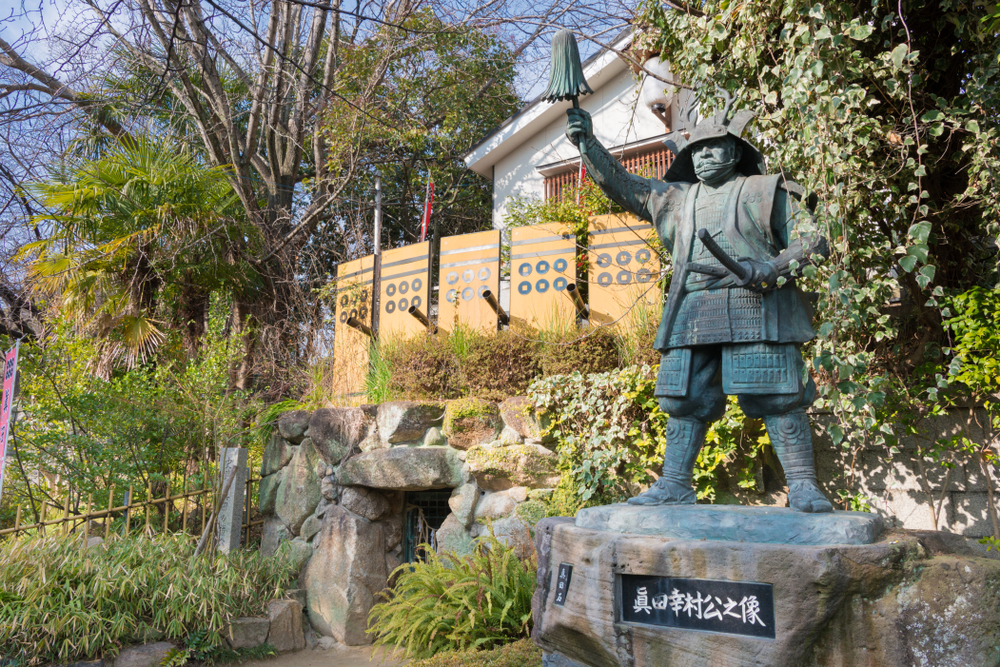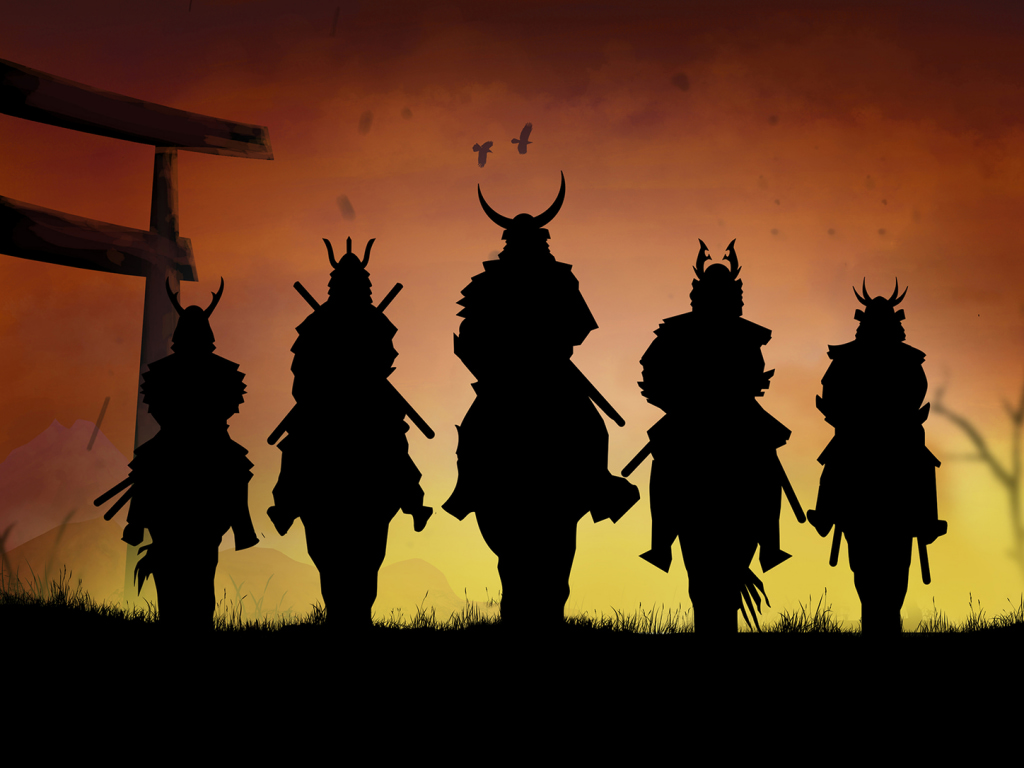For many of us, our love of Japanese history starts with the samurai. There’s something about these ancient warriors that ignites the imagination. Perhaps it’s their appearance or their bushido code of ethics. Perhaps it’s their choice of weapons. Katanas are plain awesome, and it’s impossible not to look cool while using one to kill your enemies like some kind of analog Jedi. As such, the standard for being labeled “badass” is pretty high among the samurai. These are some of the warriors who made the grade:

Source: Shutterstock
Don’t Let a Smallpox Eye Infection Slow You Down
A good first step toward making it into the Badass Annals of History is a catchy nickname. Just look at Edward “Blackbeard” Teach. In this regard, Date Masamune is no slouch, having acquired the badass moniker of “the One-Eyed Dragon” after he reportedly cut out his smallpox-infected eye sometime in the late 16th century.
At age 17, he was made the head of his clan, which was known for going into battle in black armor and golden headwear. He eventually went on to become a veteran of countless battles where he distinguished himself as a fearless, master tactician. Then, after all that, he also sent a samurai envoy to meet the Pope, to make double-sure that history remembered the name Date Masamune.
The Long and the Short of It
Although we today associate samurai with katanas, the swords were not their main weapon of choice. For centuries, samurai were primarily archers, with Minamoto no Tametomo being possibly the greatest one of them all.
Born in the 12th century, legend says that one of Tametomo’s arms was longer than the other, allowing him to pull the string of his bow further than anyone else. This apparently made him an unstoppable archer, although some of his achievements have clearly been exaggerated over time, like the tale of him sinking an enemy ship with one arrow. At the very least, he had to have used three.

Source: Wikipedia Commons
Wonder Samurai
About a thousand years before there officially was such a thing as samurai, some noble Japanese women trained extensively in the use of weapons and fought in wars alongside men. With time, they evolved into a class of their own: the onna-bugeisha, or female samurai, like the badass Tomoe Gozen.
She was a 12th-century warrior who fought in the Genpei War where early on she distinguished herself by joining various vanguards and at one time collecting seven heads of enemy samurai. She is also said to have led 300 warriors against a group of 6,000 and being one of the few survivors. Epic poems from her time period mention that Gozen “was a warrior worth a thousand,” and it doesn’t feel like they were exaggerating.
Out of Africa
Yasuke was the first and only black samurai. Little is known about his origin or even his real name, but we do know that he arrived in Japan in 1579 with the Jesuit missionary Alessandro Valignano, making an instant impression on the powerful warlord Oda Nobunaga. It’s very likely that at that point Yasuke could already speak Japanese (plus Italian and Portuguese), but it was his strength and size that really impressed Nobunaga who made Yasuke his bodyguard and eventually elevated him to the rank of samurai.
Of course, this all happened after Nobunaga ordered Yasuke to be stripped and washed in front of him the first time they met because he suspected his black skin was actually dyed with ink. But that was just a small hiccup on the impressive journey of this African polyglot from his home country to Europe and then finally to the other side of the world where he became close to one of the most powerful men in Japanese history.

Source: Shutterstock
Under Siege
Sanada Yukimura (1567 – 1615) isn’t just considered one of the greatest samurai in history. He also seems to have a monopoly on cool historical nicknames like “the Crimson Demon of War,” “the Last Sengoku Hero,” or “the Number One Warrior in Japan,” none of which Sanada acquired ironically.
What makes Sanada Yukimura so celebrated even today in Japan is that he was an underdog fighting on the losing side of history. He gained prominence by going against Tokugawa Ieyasu shortly before he concluded his unification of Japan. But Sanada did not make it easy for him with his brave defense of Ueda Castle and during the Winter Battle of Osaka Castle. To this day, Sanada is remembered as a coolheaded tactician with a larger than life personality who, according to some legends, also commanded a group of ninjas. Where Sanada is concerned, I suppose anything is possible.









